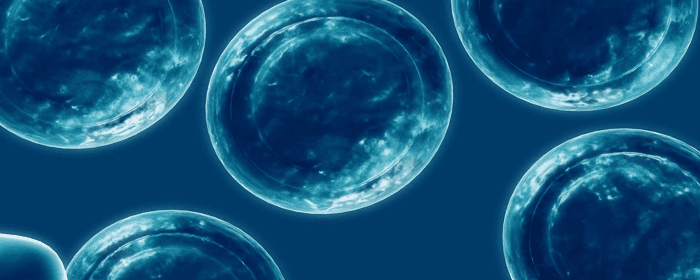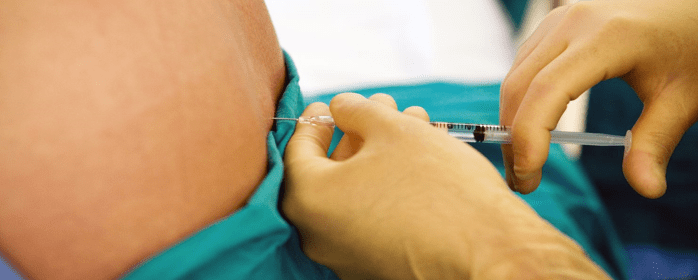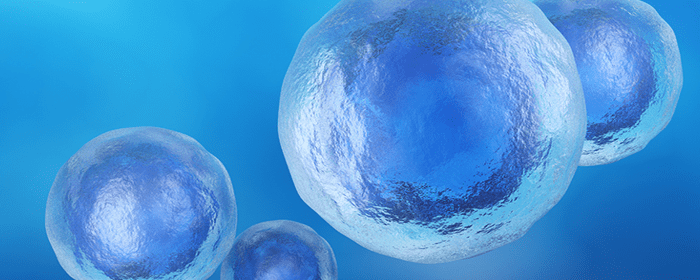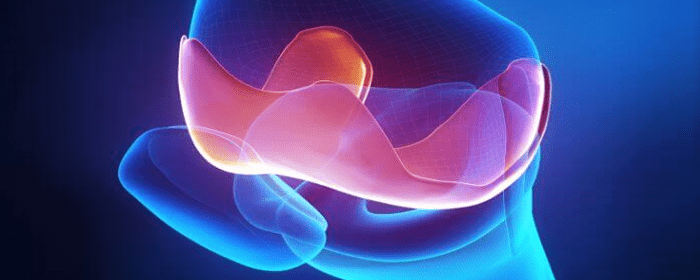
by admin | Dec 14, 2023 | Parkinson's Disease, Mesenchymal Stem Cells, Regenerative Medicine, Stem Cell Research, Stem Cell Therapy
Parkinson’s disease (PD) is the second most predominant neurodegenerative disorder worldwide, affecting over 10 million people. Characterized by a slow and progressive loss of control of the neurological system as a result of dopamine depletion, symptoms of PD often include tremors, slowed movement, impaired posture and balance, and gradual loss of automatic movements.
While PD cannot be cured, current treatment is focused on alleviating symptoms and slowing the progression of the disease. Specifically, deep brain stimulation or therapies to increase DA levels by administering a DA precursor are the available therapy options for PD.
However, research has found that DA precursor therapy has little effect on the progression of PD and its efficacy decreases as the disease progresses.
Recent progress in the clinical understanding of regenerative medicine and its properties associated with stem cell therapy has provided the opportunity to evaluate new and potentially effective methods for treating a wide range of neurodegenerative illnesses, including PD. Specifically, mesenchymal stem cells (MSCs) have been found to be the most promising form of stem cell and have demonstrated the ability to differentiate into dopaminergic neurons and produce neurotrophic substances.
In this review, Heris et al. discuss the application of MSCs and MSC-derived exosomes in PD treatment.
Research has identified dysregulation of the autophagy system in the brains of PD patients, suggesting a potential role for autophagy in PD. In PD models, MSCs may activate autophagy signals and exhibit immunomodulatory effects that alleviate inflammation and improve tissue healing; this type of treatment had previously been used in treating various forms of neuroinflammatory and neurodegenerative illnesses.
The authors indicate that MSCs can be administered either systemically or locally. While systemic transplantation allows MSC-based treatment of pathologies affecting the entire body, local transplantation aims to alleviate symptoms associated with illnesses that originate from certain organs and is performed through intramuscular or direct tissue injection.
Research has also demonstrated that stem cell-derived dopaminergic transplants could be a suitable method for the long-term survival and function of transplants; in the case of MSC therapy, the average dose in animal models is usually 50 million cells for each kg of weight.
MSC-derived exosomes demonstrate therapeutic characteristics similar to their parents, have the ability to avoid whole-cell post-transplant adverse events, have a high safety profile, cannot turn into pre-malignant cells, and no cases of immune response and rejection have been reported.
While the use of MSCs in the treatment of PD continues to show potential, Heris et al. point out that many of the clinical trials have had few participants and can be costly. Considering these limiting factors, the results from these studies are not able to be generalized to everyday medical care without further clinical studies to address these concerns.
Source: “The potential use of mesenchymal stem cells and their exosomes in ….” 28 Jul. 2022, https://stemcellres.biomedcentral.com/articles/10.1186/s13287-022-03050-4.

by admin | Dec 7, 2023 | Mesenchymal Stem Cells, Regenerative Medicine, Stem Cell Research, Stem Cell Therapy
Stem cells respond to signals released by damaged or diseased tissue by differentiating in an effort to replace these cells.
As researchers continue to learn more about the various applications of stem cells as they relate to the body’s healing process, they’ve discovered two significant issues relating to the process of stem cell application. The first issue involves various methods that enable the stem cell transformation to targeted cells or successful engrafting. The authors of this review indicate that there are many proposed solutions to this issue, which are not covered as part of this review.
In this review, Maric et al. address the second known issue, analyzing cell homing. More specifically, understand how to direct the migration of most of the transferred cells to the desired location. Research has demonstrated that the greater the number of administered stem cells, the better the treatment outcomes. However, research has also indicated that there is a saturation plateau where no additional benefit has been achieved.
Previous studies have demonstrated positive results for non-invasive methods of stem cell transplant. However, it’s typical for stem cells to dissipate to other organs rather than to the brain, which are the targeted areas for a wide spectrum of neurodegenerative diseases.
Reviewing the existing research on stem cell homing, the authors draw a number of conclusions, including the location of the stem cell injection site impacts the homing results with better migration results when injections are closer to the targeted locations; preprocessing may increase homing efficiency; there are a number of potential methods that may improve the homing mechanisms; understanding the mechanism of neurodegenerative disease is essential to understanding the homing process and to predict the engraftment results; stem cells improve the plasticity of the brain; and that intrathecal application has many benefits, fewer adverse effects, and has been shown to be safe.
Additionally, Maric et al. raise issues that require further study, including evaluating the discrepancy between in vivo and in vitro results; paying more attention to the prospects of mathematical, physical, and computer models and simulations; investigation of real-time development and spatial information of the homing processes; and the need for a deeper understanding of homing mechanisms in homing mechanisms in intrathecal and other ways of administration.
The authors conclude that, in the case of neurodegenerative diseases, intrathecal application of stem cells via direct delivery to the cerebrospinal fluid has the advantage of no blood-brain barrier restriction, further study into the long-term study of what specifically slows the migration of injected cells is required.
Source: “Stem Cell Homing in Intrathecal Applications and Inspirations … – NCBI.” 13 Apr. 2022, https://www.ncbi.nlm.nih.gov/pmc/articles/PMC9027729/.

by admin | Nov 30, 2023 | Erectile Dysfunction, Mesenchymal Stem Cells, Regenerative Medicine, Stem Cell Research, Stem Cell Therapy
Erectile dysfunction (ED) is a disorder that affects the quality of life and the sexual relations of more than half of the male population aged over 40 years. Currently, it’s estimated that his disorder will affect more than 300 million men in the next five years.
According to the Mayo Clinic, male sexual arousal is a complex process that involves the brain, hormones, emotions, nerves, muscles, and blood vessels. Erectile dysfunction can result from a problem with any of these. Additionally, stress and mental health concerns can cause or worsen erectile dysfunction.
The treatment of ED has traditionally been based on the temporary enhancement of penile erection but without a permanent treatment option. Current temporary treatment options include phosphodiesterase type-5 inhibitors (PDE5is) such as vardenafil, avanafil, tadalafil, and sildenafil, which are the most widely known and used medications for the treatment of ED.
Unfortunately, the treatment failure levels associated with these drugs are high, with unresponsive rates ranging between 20 and 40%. These failure rates often require the use of additional treatment options for the management of ED, including the use of intracorporeal injections, vacuum erection devices, and penile prosthesis implantation. However, the use and application is also limited due to the high cost, intolerance to side effects, pain, and unsatisfactory results.
Recently, several studies have suggested the use of stem cells for the treatment of ED to be promising in terms of damaged tissue repair as well as clinical efficacy.
In their review of current literature, Protogerou et al. evaluate and summarize the methods of administration, the cell types used in the performed clinical trials, and the safety and efficiency of procedures designed to treat ED.
Specifically, the authors reviewed 10 clinical studies published between 2010 and 2020 and used bone marrow-derived stem cells (BMSCs), adipose tissue-derived stem cells (ADSCs), umbilical cord stem cells, and placenta-derived stem cells. One of the studies reviewed also examined the re-administration of stem cells as a potential therapeutic option. From the authors’ findings, each study demonstrated encouraging results characterized by improved sexual function with no side effects.
Protogerou et al. also point out a number of limitations with these studies, including each being a small study with a short follow-up period, various etiologies of ED, and without control groups.
Despite these limitations, the authors highlight the urgent need for a double-blind randomized controlled study for the clinical effect of stem cell treatment in ED to sufficiently understand the ideal therapeutic strategy for using stem cell therapy to treat ED. Source: “Erectile Dysfunction Treatment Using Stem Cells: A Review – PMC.” 6 Jan. 2021, https://www.ncbi.nlm.nih.gov/pmc/articles/PMC7825548/.

by admin | Nov 23, 2023 | Autoimmune, Mesenchymal Stem Cells, Regenerative Medicine, Stem Cell Research, Stem Cell Therapy
Recent estimates indicate that one in every 10 people is affected by an autoimmune disease.
Autoimmune diseases occur when the normal function of the immune system mistakenly attacks normal and healthy cells within the body; examples of autoimmune diseases include rheumatoid arthritis, type 1 diabetes, and lupus. Currently, there are over 80 known types of autoimmune disease.
Because of their proliferation and differentiation ability, mesenchymal stem cells (MSCs) have increasingly drawn interest from the research community as a potential option for the treatment of autoimmune diseases.
In this study, Zeng et al. evaluate the efficacy and safety of MSC transplantation in the treatment of autoimmune diseases. Specifically, this review included a total of 18 RCTs involving rheumatoid arthritis (RA), systemic lupus erythematosus (SLE), inflammatory bowel disease (IBS), ankylosing spondylitis (AS), and multiple sclerosis (MS).
Reviewing the therapeutic effects of MSCs on each of the diseases, the authors found that with the exception of MS, transplantation of MSCs may improve clinical symptoms and clinical efficacy of these autoimmune diseases. However, the authors also point out that MSCs appear to produce certain specific effects on different autoimmune diseases.
Although no obvious adverse events resulting from MSC transplantation were reported or observed during these studies, and while MSCs appear to have certain effects on different autoimmune diseases, the authors conclude that this review provides relevant evidence for the design of future clinical trials specifically assessing MSC cell source, dosage, route of drug administration, and intervention in the most ideal disease state when treating this group of diseases.
Source: “Efficacy and Safety of Mesenchymal Stem Cell Transplantation in ….” https://www.hindawi.com/journals/sci/2022/9463314/.

by admin | Nov 16, 2023 | Mesenchymal Stem Cells, Stem Cell Research, Stem Cell Therapy
Ankylosing spondylitis (AS) is a progressive, inflammatory rheumatoid disease that, over time, can result in chronic spinal arthritis and can cause the vertebrae to fuse together. Affecting an estimated 300,000 people in the U.S., AS causes the spine to become less flexible and can result in a hunched posture.
There is no current treatment for AS and current drug therapy options are focused on reducing inflammation, stiffness, and back pain. While current treatments assist in reducing inflammation, many patients with AS continue to experience unresponsive or painful side effects from these drugs.
In the search for a cure for AS, stem cells – and specifically, mesenchymal stem cells (MSCs) have emerged as a potentially promising treatment option. Specifically, researchers believe the immunomodulatory and regenerative properties demonstrated by MSCs could reduce inflammatory responses and help tissue repair through cell-to-cell contact and secretion of soluble factors.
In this review, Abdolmohammadi et al. describe immunopathogenesis and current treatment restrictions of AS and discuss the recent findings of clinical trials involving MSC therapy in AS.
The safety and therapeutic potency of MSC therapy have been shown in many types of research. While there are currently a number of in-process clinical trials exploring MSC transplantation in related disorders, the transplantation of MSCs is a therapeutic option for AS patients who cannot tolerate the anti-inflammatory drugs.
Previous studies have demonstrated MSC infusion in AS patients to be a safe and beneficial choice with no severe side effects and is effective in decreasing related clinical symptoms and severity of the disease. There are also a number of clinical trials for curing AS patients currently in progress. These trials include phase 1 exploring the application of human umbilical cord-derived MSCs (hUC-MSCs) and IV infusion of MSCs plus NSAIDs in AS patients, phase 2 of a clinical trial evaluating human bone marrow-derived MSCs application in AS patients, and clinical trial phase I/II for the safety of MSC transplantation in patients with AS.
Although there have been notable achievements in the treatment of AS using NSAIDs, glucocorticoids, and other drugs, a therapeutic option without side effects has yet to be discovered. MSCs offer a favorable treatment option for the treatment of immune-mediated disorders, including AS.
While findings of previous studies demonstrate that MSC injection might be beneficial in alleviating AS signs and symptoms, the authors point out that further study is required to determine several important features of MSC therapy, including cell origin, dosage, administration route, and the most ideal stage of disease for intervention, before it can be accepted as a clinical option for treating AS.
Source: “Ankylosing spondylitis and mesenchymal stromal/stem cell therapy.” https://www.sciencedirect.com/science/article/pii/S0753332218356762.

by admin | Nov 9, 2023 | Athletic Injury, Mesenchymal Stem Cells, Regenerative Medicine, Stem Cell Research, Stem Cell Therapy
Articular cartilage primarily consists of chondrocytes and extracellular matrix and has an essential role in the process of joint movement, including lubrication, shock absorption, and conduction. However, over time, damage to the articular cartilage caused by acute or repetitive trauma or disease of the joints – including osteoarthritis – often results in pain, lack of mobility, and reduced quality of life for an estimated 500 million people worldwide.
Current treatments to address articular cartilage defects include physiotherapy, medication, intra-articular injection, and intra-articular irrigation; none of these treatments are able to regenerate the new cartilage needed to correct the issue.
In recent years, mesenchymal stem cells (MSCs) have been found to be potential solutions for a number of diseases, including OA, specifically because of their ability to differentiate and produce a variety of cells. MSCs have also been found to be safe for use in humans and have demonstrated the ability to improve clinical symptoms such as pain, disability, and physical function.
Additionally, hyaluronic acid (HA) has demonstrated itself to be an important component of the synovial fluid by protecting joint cartilage by providing lubrication and acting as a shock absorber. However, in the presence of OA, HA concentration decreases and results in increased aggravation and joint damage to cartilage. Like MSCs, clinical studies have also demonstrated HA’s ability to relieve pain in patients with OA.
In this study, Li et al, investigate the therapeutic effects of bone marrow mesenchymal stem cells (BMSCs) combined with HA on articular cartilage repairs.
Specifically, 24 healthy canines were operated on to induce cartilage defect model before being randomly divided into 3 groups; each of these groups received a different treatment: bone marrow mesenchymal stem cells (MBSCs) plus HA, HA alone, or saline. After 28 weeks, Li et al. found that the canines treated with BMSCs plus HA (BMSC-HA) showed significant improvement in cartilage defects compared to those receiving just HA or just saline.
The authors also found that while BMSCs-HA demonstrated the most significant improvement in cartilage defect, treatment with HA alone also demonstrated improvements when compared to those receiving saline alone.
Li et al. also identified a number of important limitations of this study, including the limited level of cells and proteins; the repair of cartilage defects in this study was a dynamic process that limited the study to the terminal point of repair; and that this was a preliminary and non-blinded study, which could have affected the evaluation of ICRS macroscopic and histological score. Considering this, the authors call for further blinded and basic experiments as a way to further improve understanding.
As a result of this study, Li et al. concluded that both BMSCs-HA and HA alone could significantly promote new cartilage formation, with BMSCs-HA demonstrating a better way to repair cartilage defects in a canine model.
Source: “Mesenchymal Stem Cells in Combination with Hyaluronic Acid for ….” 2 Jul. 2018, https://www.ncbi.nlm.nih.gov/pmc/articles/PMC6028658/.







 St. Petersburg, Florida
St. Petersburg, Florida
